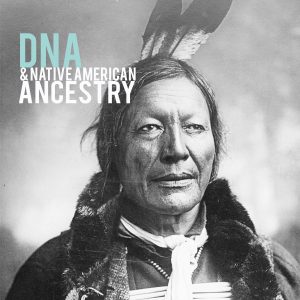Once again, genetics has changed the way we see the world. This time, it centers around a little girl who lived 11,500 years ago, the ancestry of Native Americans and the manner in which the peopling of the Americas took place.
A recent paper published in Nature by Moreno Mayar has shed light on the timeline of how people made it to the New World and became a genetically distinct population different than the ancient peoples found in Asia. A young girl, only six weeks old, buried in Central Alaska 11,500 years ago has provided the missing link to the story. With the permission of Native Peoples whose land the girl’s grave was located on, the girl’s DNA was used to fill in missing pieces in the story of the peopling of the Americas. Known as the Sunrise Child-Girl by the local community, her genome is now the oldest genetic profile of a New World human yet to be completed and has given scientists and historians insight into the ancestry of Native Americans.

For a long time, it has been known that people first arrived in North America via a land bridge between Asia and what is now Alaska as long as 26,000 years ago. It was thought that this population of people became isolated in an area that is now submerged underwater called Beringia. This theory is known as the Beringian Standstill and claims that this group of people became isolated from all other populations for nearly 7,000 years, allowing them to develop the distinct genetic markers found in Native American populations that vary so greatly from populations in Asia where the group originated. What has remained unclear is the exact timeline of how this group truly became so genetically distinct and when they dispersed through out North America.
After comparing the Sunrise girl’s DNA to the genomes of 167 native populations from around the world, she was found to be both related to native populations in Asia as well as Native Americans, but not distinctly to either one. This result proves the existence of an entirely separate population that was previously unknown and simultaneously linked to the establishment of humans in North America. Because the girl’s DNA shares genetic markers with, but is very different from the Native American genome, it is now believed that a completely different group of people split from the girl’s population 20,000 years ago. This group then gave rise to Native American populations. It is still up for debate whether both groups experienced isolation from Asian populations separately and then entered North America via different means, or the two were isolated together and split at a later date, but it is very clear that this little girl’s relatives played a large role in modern day genomics.
Based on genetic evidence, cranial and tooth morphology, it has been known that Native Americans were very genetically unique for some time. In fact, many have wondered how such a small group of immigrants from Asia could possibly become so genetically unique in the time span of 15,000 years. The Sunrise girl answers only a part of that question. Seeing as there is no reliable documentation of Native American populations in North America earlier than 14,600 years ago, it’s still a mystery how a group could be so genetically distinct. Discoveries like this one are leading scientists to believe that people arrived in North America and were isolated from Asian populations for longer than previously expected. Either way, it’s evident that much more DNA evidence is needed to fully complete the story.

